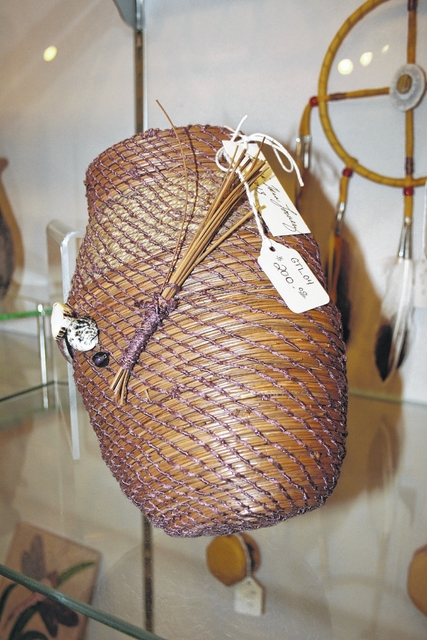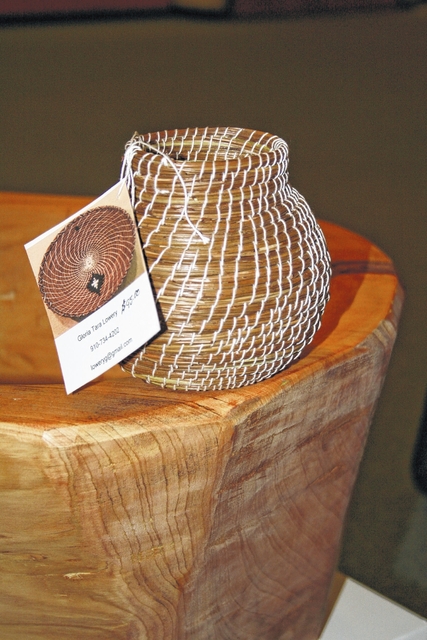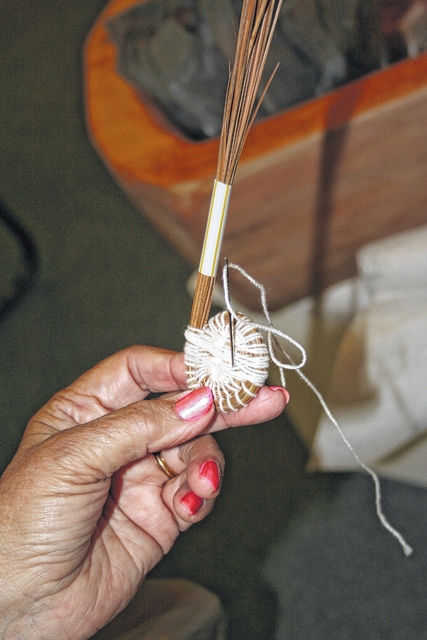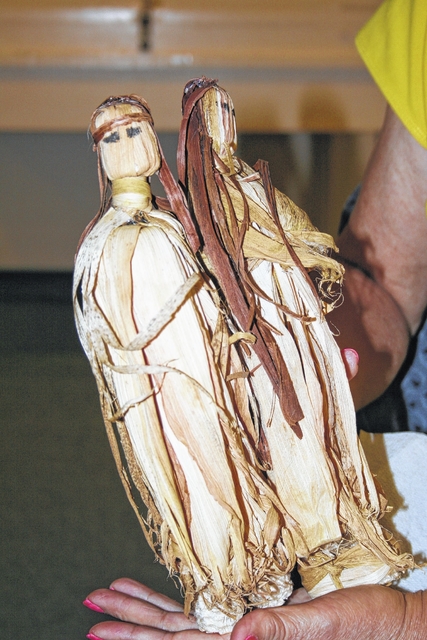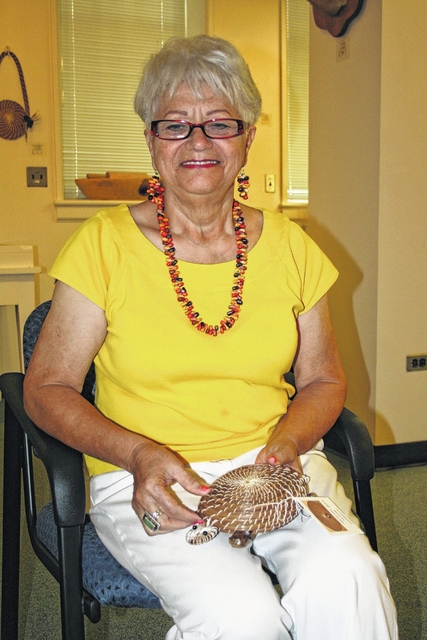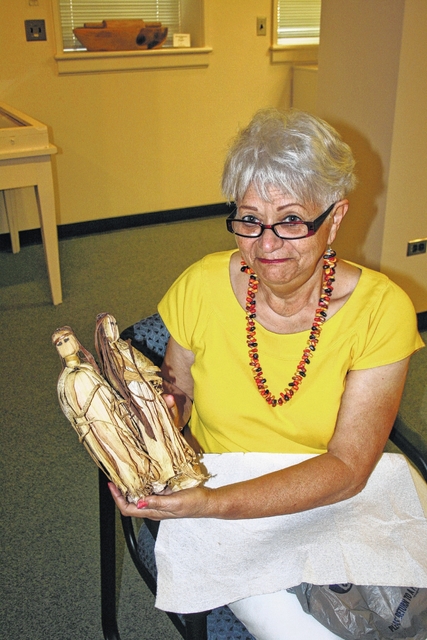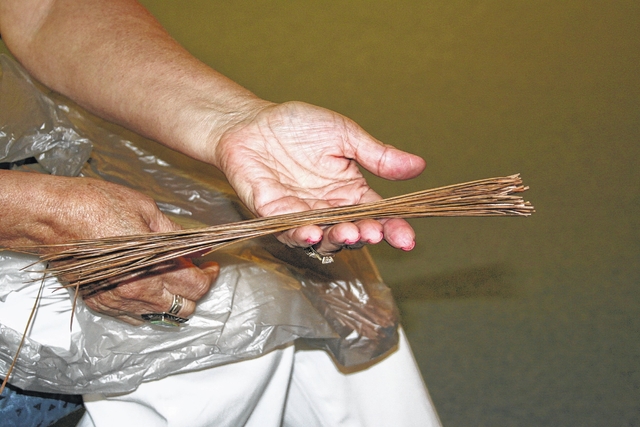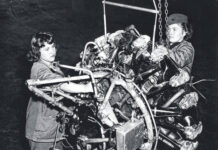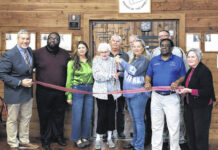PEMBROKE — When Gloria Tara Lowery leads a workshop at The University of North Carolina at Pembroke, the local artist is teaching more than a crafting skill set. She is passing on traditions and history.
“I’m sharing some of the things taught to me by my mother,” Lowery said of her workshops for making corn-shuck dolls and corn beading. She added that her mother was taught by her own mother.
“I feel it’s my responsibility to pass it on,” Lowery said.
Lowery, who lives in Lumberton, teaches one of several arts and crafts classes offered through UNCP’s American Indian Studies program.
Corn-shuck dolls were used as teaching tools for children, she said.
“There was an attempt to teach about pride and what the outcome is for having too much pride,” Lowery said.
“There was this family with children, and they were all blessed to be beautiful,” she said of the lesson Lumbee elders teach. “They became prideful of their beauty and walked around the community saying, ‘Look at me, I am so beautiful, I’m so perfect.’
“Of course people would resent that — when people are so pretty, and then they want to tell you about it all the time. So, one day, when they were walking through the forest, they stopped to look at their reflections in the river, and began to talk about how pretty they were. And a wind came up and blew across the water and when they turned around, they had lost their noses and they had lost their mouths. Until they could get over this thing of pride, until they could do better, they would not receive their noses or mouths back again.
“So they had to walk among the community and not be able to say anything,” Lowery said. “It was a story to show children how having pride can hurt.”
“When the colonists came over, they took this concept and made their own shuck dolls,” Lowery said. “Of course they had waistlines, and they had arms, and they would dress them with cloth.”
“My mother taught me how to make them this way, which is typical of how they looked,” Lowery said, indicating the dolls in her lap. “And we also did them the colonist way. We’d take scrap material that we made quilts with, and make clothing for them.”
Lowery’s education in crafting with natural materials later grew to include longleaf pine needle baskets.
“The pine needle baskets, I learned from one of my friends,” she said. “His ancestors taught him.”
“The baskets were used as storage bins for potatoes, nuts, and things like that,” Lowery said. “The contents would not rot as they would do in leather, because air would circulate through the pine needles and the shelf life would be longer.”
Lowery said that any pine needles can be used, but she uses the longleaf pine needles that grow in Robeson County. At one time, longleaf pines were plentiful in the area, she said.
“Turpentine people kind of ruined that,” she said. “So, they are kind of rare now. But you can find them.”
The pine needles have to be sterilized in white vinegar and water. After they are boiled, they are laid out on towels to dry.
The straws or needle are fed into a core.
“Just like crocheting, once you get the core done, then the rest of it you can do while you’re riding in the car or watching TV,” she said, ” … and, before you know it, you’ve got a basket.”
“It’s fun,” she said. “It’s important that young people learn how to do it. Not many will follow through and keep it as a hobby, but there will be some who will see the importance and continue to teach.”
Jessica Clark participated in one of Lowery’s pine-needle basket workshops to get the fundamentals.
“I’ve always wanted to make a pine-needle basket,” Clark said. “It can be difficult getting started. That’s the hardest part. You kind of want to take a class to get an idea of how to get started, and then you can kind of take it anyway you want to go.”
Lowery also leads a workshop at UNCP for corn beading.
“As sharecroppers in the county, we didn’t have a lot of money to buy jewelry and stuff like that, so we made corn necklaces,” she said. “At one time, the first ones I made were just of the corn color. Then, when my mother was able to buy dye that she would dye cloth with, we would dye corn.”
Lowery pointed out that they didn’t use the more ornamental Indian corn.
“Indian corn is primarily used for meal,” she said. “It’s not very tasty.”
“We used (regular corn) because it was readily available,” she said. “You grew it for feed for your animals. You grew the corn to feed yourself, and it was delicious.”
Lowery said that decorative beading was done as a thank you to the Great Spirit, and was worn only for special occasions, such as weddings and birthdays.
“Not for everyday wear,” she said. “They were special.”
As with the corn shuck dolls and pine needle baskets, Lowery works with raw materials.
“My brother has a farm — he’ll pick (the corn) for me,” she said. “And then I shell them. I save the husks and the cobs.”
Like the pine needles, she sterilizes the kernels in a boiling mix of white vinegar and water.
“If you use them straight, there are little critters in there that will eventually grow up and come out,” she said.
The sterilized kernels are laid out on towels to dry in the sun.
Lowery said kernels are then soaked in mason jars of dye overnight, rinsed until the water runs clear, and the drying process is repeated. After the second drying, the kernels are ready to be used.
Lowery hopes the workshops will continue to foster interest in learning — and keeping alive — such traditions.
“Today’s youth don’t often endeavor to craft such things,” she said. “You get to a certain age in life and you begin to realize the importance of what you were taught when you were small, and so I feel very strongly that I should teach as much as I can. We’re trying to keep an interest in it, so the young people will know it and not forget it.”
